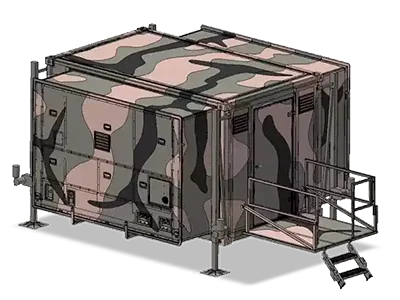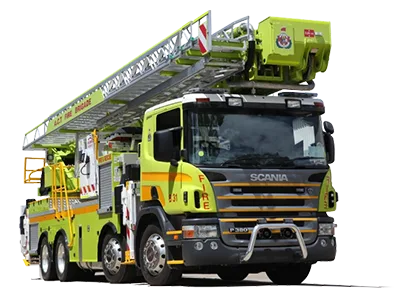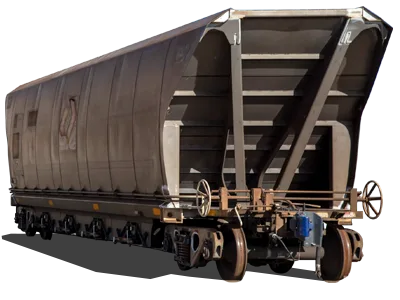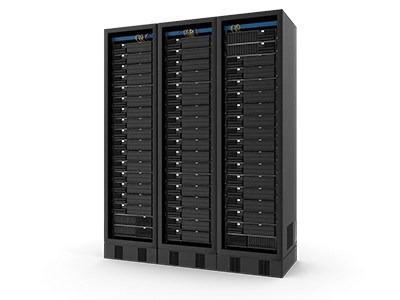ICT infrastructure that powers excellence
Varley Systems’ ICT capabilities pioneer innovation, ensure seamless connectivity, and fortify operations for unparalleled excellence.
Future-focused is our present
Varley Systems’ ICT Infrastructure service empowers businesses for growth whatever the future brings.
Varley Systems’ ICT Infrastructure services address critical business needs by reevaluating aging infrastructure and complex technology challenges. We undertake a comprehensive assessment covering architectural design, security, data centre connectivity, and above all, business continuity.
Our meticulous approach ensures a thorough exploration, analysis, definition, and delivery process ensuring business and organisations have the room and the security to scale into the future.

Data centre strategy
Varley Systems collaborated with client specialists to assess and propose improvements for scalability, security, connectivity, and operational efficiency in their ICT environment.
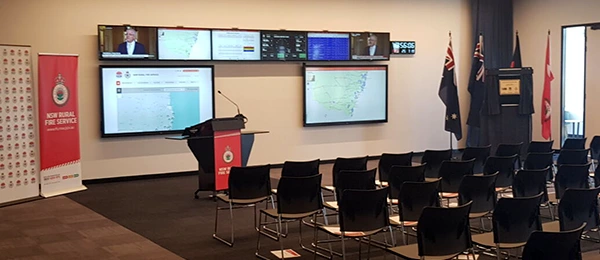
AV Design and Integration
We delivered a cutting-edge technology solution for an innovative training facility that meet its requirement for flexibility and a diverse range training scenarios.
Data centre strategy
The Brief: With a refresh of data centre assets due, the company decided to use this as an opportunity to transform the overall data centre architecture to enable alignment with their current and future business needs.
With ageing infrastructure and architectural technology topologies that were proving difficult to maintain, as well as the need to implement new services, the business took the opportunity to review their hosting and data centre strategy rather than merely doing a hardware refresh. The designs of the existing infrastructure solutions also made implementing changes complex and a complete review and redesign would provide the opportunity to significantly reduce the risk profile associated with implementing changes and new services.

The Outcome
Working collaboratively with client specialists, Varley Systems’ The Frame Group gathered technical details of the current ICT environment together with the future technical and business requirements covering the following areas:
- An architectural design facilitating the capability to scale up/down via modular constructs i.e., ICT technology patterns
- Security
- data Centre (services) connectivity; on-premises and Cloud (multiple service providers)
- Secure access connectivity:
- Internet
- Corporate Head Office
- SaaS provider(s)
- Customer
- Third party
- ICT business continuity including application ‘active + active’ mode of operation
- Data Centre services:
- Application load balancing
- Discrete on-premises workload segregation via physical and or logical mechanisms
- Management tools and services
- Data backup and recovery
- Other current pain points:
- on-premises cabling; copper and optic fibre (DC LAN and SAN)
- cabinet PDU monitoring
- Stability and operational performance
The client was then provided with a summary report of their current state together with details of the steps required to meet the desired future state.
What we did
The data centre strategy was of high importance to the client as they needed to transform its ICT over the next 5 years to facilitate new services and improve reliability.
The assessment and analysis approach follows the Frame assurance review methodology which comprises the following stages:
- Explore and Discover
- Analyse
- Define
The steps undertaken to execute the scope were as follows:
- Engage with stakeholders
- Undertake a desktop review of information provided
- Gather, collate, review, and analyse the existing supporting documentation
- Interview the key stakeholders
- Document the current state assessment report.
Following the completion of the Explore and Discover phases, Frame then analysed the current state and defined the new architectural designs and patterns required to meet the ICT and business requirements.
Frame then provided the client with a final data centre strategy report covering:
- How strategic objectives will be enabled by ICT technology and services (key performance indicators, and management service objectives)
- An examination of the existing ICT infrastructure compared against industry recognised ICT standards. The resultant gap analysis will serve to identify from an ICT perspective where client is now, where it wants/needs to be at certain points in time and what the initiatives are that will progressively address the identified gaps
- Capacity forecasting for the ICT infrastructure; networks, servers and data storage, cabinets, and cabling
- An overlay of the five-year technology deployment roadmap against the clients strategic Data Centre ICT objectives
- Development of a high-level budget estimate against the deployment roadmap
AV design and integration
The Brief: The New South Wales Rural Fire Service (RFS) plays a critical role in safeguarding communities across the state during emergencies. To empower their dedicated volunteers and staff, the organisation embarked on a visionary project: creating a world-class training facility. This case study outlines the journey of designing and developing this state-of-the-art training centre, emphasising how it enhances skills, knowledge, and emergency response capabilities.
Transforming Training Facilities for the NSW RFS
The New South Wales Rural Fire Service (NSW RFS) stands as the world’s largest volunteer firefighting service, boasting a workforce of over 1,000 staff and approximately 80,000 dedicated volunteers. Its mission spans across 2,100 rural fire brigades, providing crucial fire and emergency services throughout NSW. Each year, the NSW RFS responds to a staggering 25,000 incidents, underscoring the critical role it plays in safeguarding communities.
Currently, the NSW RFS operates from 50 Fire Control Centres (FCC) strategically located within 47 districts, grouped into 4 regions across NSW. These FCCs serve as both the administrative hub and operational nerve centre for rural fire districts. They play a pivotal role not only in the day-to-day Business as Usual (BAU) activities but also in the management and coordination of operational incidents.
The vision for the Dubbo Training Academy was driven by a specific and pressing need within the NSW RFS. The organisation required the creation of 4 Training Rooms and 3 Auditoriums that could be seamlessly reconfigured to cater to a diverse range of training scenarios. These scenarios spanned from individual rooms for focused training sessions to a single, large, and flexible training environment capable of accommodating large groups. This multifaceted training requirement sought to empower the NSW RFS in enhancing the skills and readiness of its volunteers and staff, ensuring they are well-prepared to respond to emergencies and serve the community effectively.
Challenges
- Navigating the Complexities of Audiovisual Integration
- The project posed several challenges: –
- Critical Audiovisual Selection: The success of the project hinged upon the selection of audiovisual systems to ensure that the chosen systems would not only meet but exceed the project’s objectives.
- Integrating Auditoriums and Training Rooms: A central objective was to create a versatile space that seamlessly transitioned between Auditoriums and Training Rooms. Achieving this required the intricate integration and synchronisation of various components, including displays, projectors, audio systems, and multiple microphone types (lectern, handheld, and lapel).
- Comprehensive Integration: Beyond audio and visual elements, the integration encompassed complex aspects such as lighting control, curtains, Operations Wall, and IR Hearing augmentation. This comprehensive integration demanded a high degree of precision and expertise.
- Programming Complexity: The integration and synchronisation of these components and systems were not straightforward. The task of programming fell upon Frame’s expert audiovisual team, who had to tackle the complexities inherent in this project.
- Navigating these challenges was essential to ensuring that the Dubbo Training Academy would fulfil its mission of providing a dynamic, adaptable, and technologically advanced training environment for the NSW Rural Fire Service.

The Outcome
The Academy’s Administration Building has been divided into four distinct areas, each serving a specific purpose:
- Administration: This section serves as the hub for permanent staff responsible for managing the facility and overseeing training operations.
- Training Coordination: Designed for visiting training staff, this area facilitates course preparation and the management of training sessions.
- Canteen/Recreation: Providing a welcoming space, this area caters to course participants, offering both nourishment and recreation opportunities.
- Training Area: The core of the facility, this space comprises four state-of-the-art Training Rooms and three versatile Auditoriums.
The Dubbo Training Academy stands as a beacon of excellence, providing invaluable resources to NSW RFS volunteers and staff, further enhancing their skills and knowledge crucial for responding to and managing emergencies across the state. The facility’s offerings include:
- Classrooms and Practical Training Areas: Equipped with cutting-edge technology, these spaces facilitate both theoretical and hands-on training.
- Large Auditorium and Lecture Theatre: These venues support immersive learning experiences and accommodate large gatherings.
- Indoor and Outdoor Training Areas: Versatility in training environments ensures readiness for various emergency scenarios.
- Fitness Facilities: A fully equipped gym is available to help maintain the physical fitness of trainees.
- Catering Services: The facility boasts a commercial kitchen, ensuring that trainees are well-nourished throughout their training programs.
- Residential-Style Accommodation: Housing up to 97 individuals, this space provides a comfortable, “home away from home” experience. It includes lounges, a library, laundry facilities, TV rooms, and air-conditioning.
Community and Multi-Agency Collaboration
While primarily dedicated to the NSW RFS, the Academy extends its reach to other emergency services organisations. It serves as a meeting centre, fostering multi-agency collaborations and strengthening the collective capacity to respond effectively to emergencies.
In summary, the Dubbo Training Academy represents a transformative space, where education, training, and collaboration converge to empower emergency responders, making them better prepared to safeguard communities across New South Wales.
What we did
Frame played a pivotal role in bringing the Dubbo Training Academy’s audiovisual experience to life. Our comprehensive services encompassed AV consultancy, design, integration, project management, and ongoing sustainment for this transformative facility.
Collaborative Integration
Working closely with the builder and the NSW RFS, Frame seamlessly integrated the audiovisual solution into the overall concept and construction of the Academy. This involved intricate details such as specifying joinery, reinforcing walls, strategically positioning control panels to align with AS1428 standards, implementing acoustic treatments, and coordinating services effectively.
Concept Development
Frame took the NSW RFS’s vision and translated it into tangible audiovisual concepts that not only met the project’s objectives but also harmonized with the spatial layouts and building infrastructure. Our team meticulously set project budgets and timelines, ensuring a well-structured plan.
Detailed Design Documentation
Our commitment to precision led to the development of detailed design documentation. This documentation encompassed various aspects, including:
- AV/VC Solutions: Detailed specifications for AV/VC solutions in each room and common areas.
- Power and Data: A robust plan for power and data infrastructure to support the AV systems.
- Lighting Design: Strategic lighting design to optimize the theater experience.
- Integration Requirements: Seamless integration to automate the use of training rooms and auditoriums.
- Wayfinding and Signage: Clear wayfinding solutions and signage for ease of navigation.
- Implementation Program: A well-structured program outlining the step-by-step implementation process.
Audiovisual Capabilities
Frame’s solution enriched the Academy with an array of audiovisual capabilities, including:
- IPTV: Broadcasting all free-to-air television stations within the region to all displays throughout the facility.
- Public Address System: Comprehensive coverage indoors and outdoors, with the added feature of dialing from a facility telephone.
- Skype Meeting: Seamless communication via Skype in the Administration Building, including the Training rooms.
- Digital Signage: Dynamic room allocation displays and information dissemination.
- Video on Demand: Access to on-demand training materials.
- Presentation Ability: Versatile presentation options via room PCs, Solstice, HDMI connections, and data sharing between rooms.
- Sound Integration: Integration of sound systems with the PA system for Training Rooms, Auditoriums, Meeting Rooms, and Training Coordinators’ areas.
- Microphones: High-quality microphones for Auditoriums.
- IR Hearing Assist: Inclusive IR Hearing Assist functions in the auditoriums.
- Room Combining: Seamless room combining options for Training Rooms and Auditoriums.
- Lighting Integration: Integration with lighting systems for enhanced auditorium experiences.
- Curtain Control: Effortless curtain control for versatile room setups.
- Duress Signals: Announcements for the Gymnasium in case of duress signals.
- Operations Wall: An Operations Wall replicating the functionality of the Fire Control Centres, enhancing situational awareness and response coordination.
Frame’s meticulous attention to detail and commitment to excellence played a pivotal role in ensuring that the Dubbo Training Academy boasts a world-class audiovisual infrastructure, enabling effective training and collaboration for the NSW RFS and other emergency services organisations.
